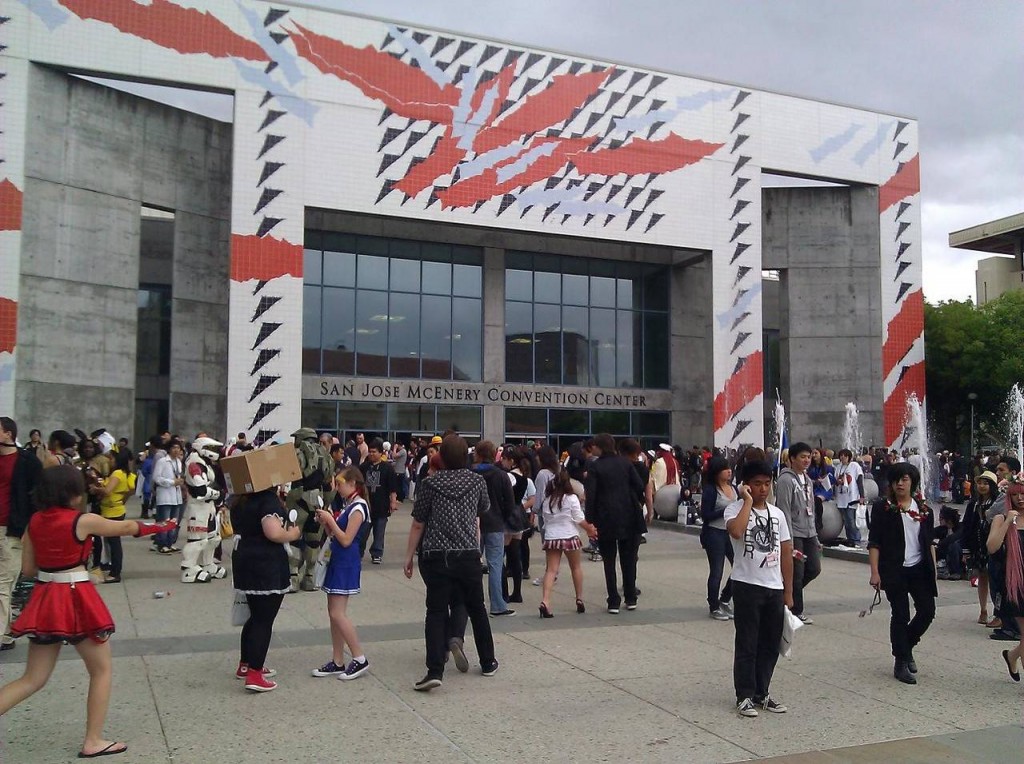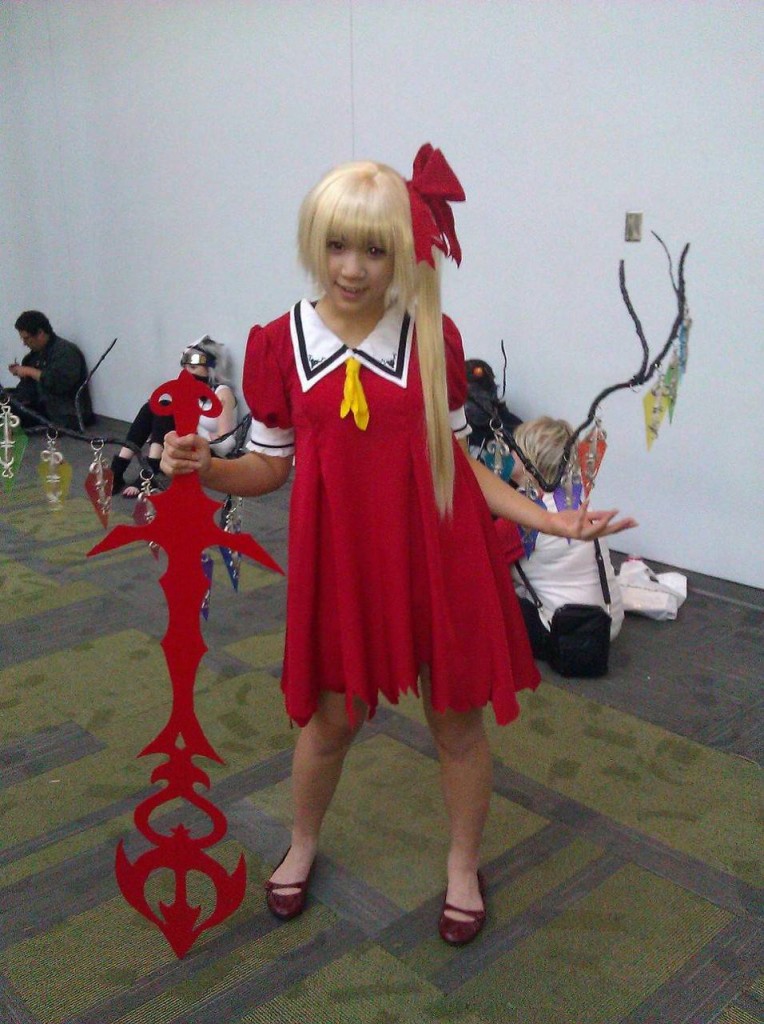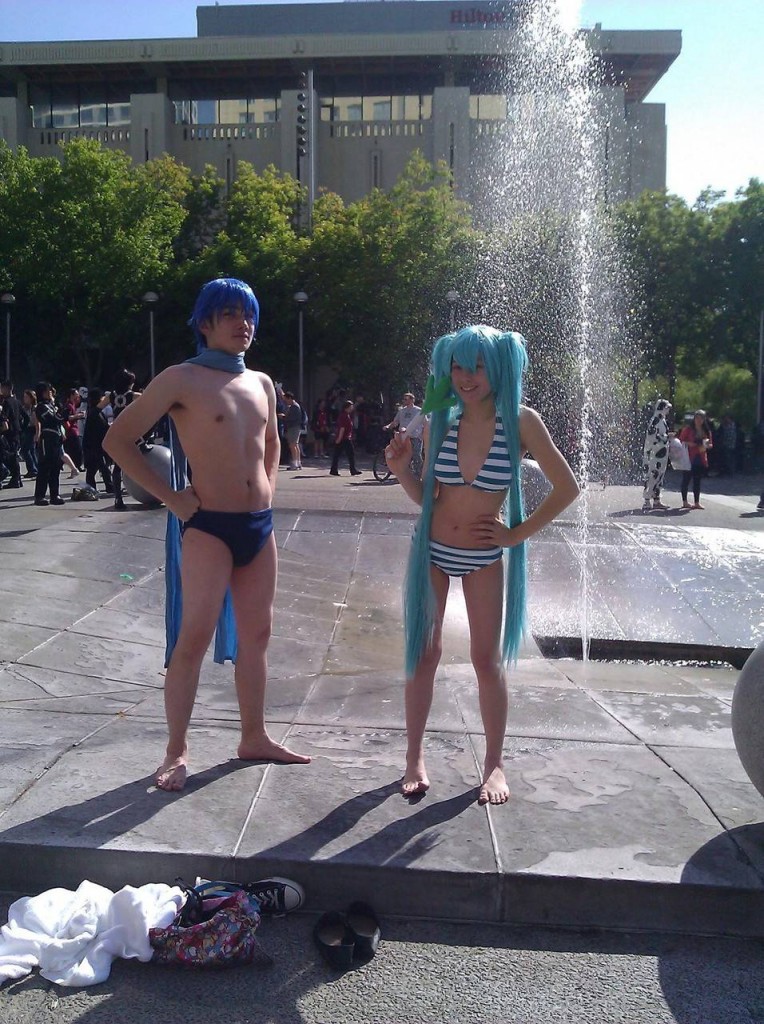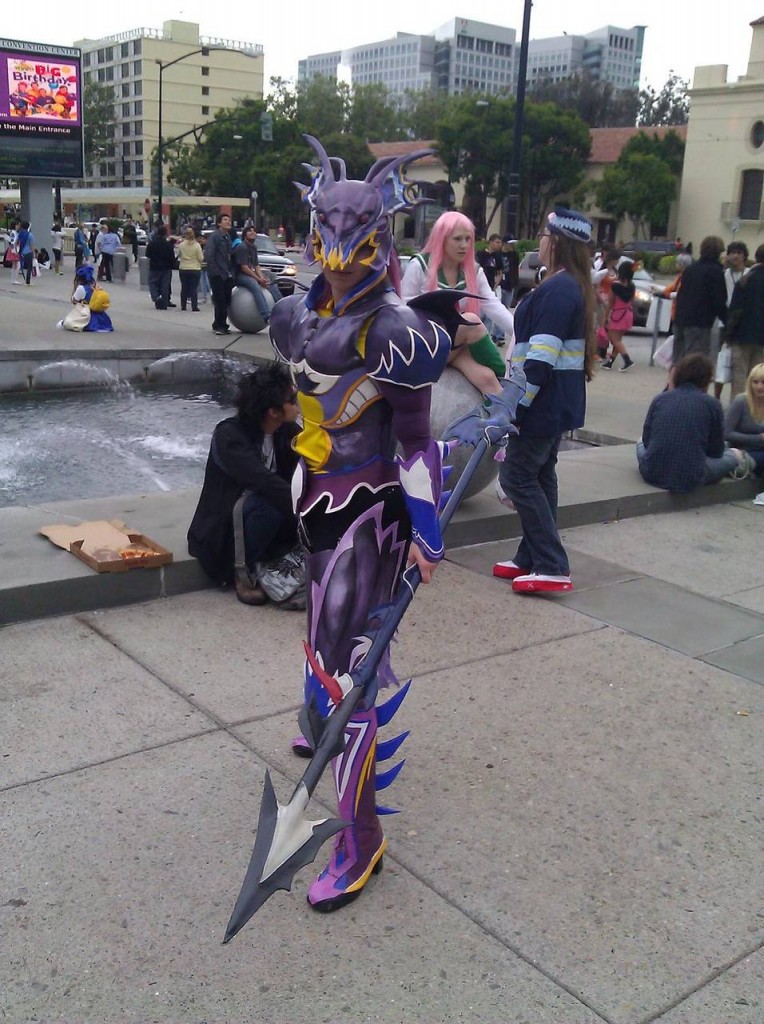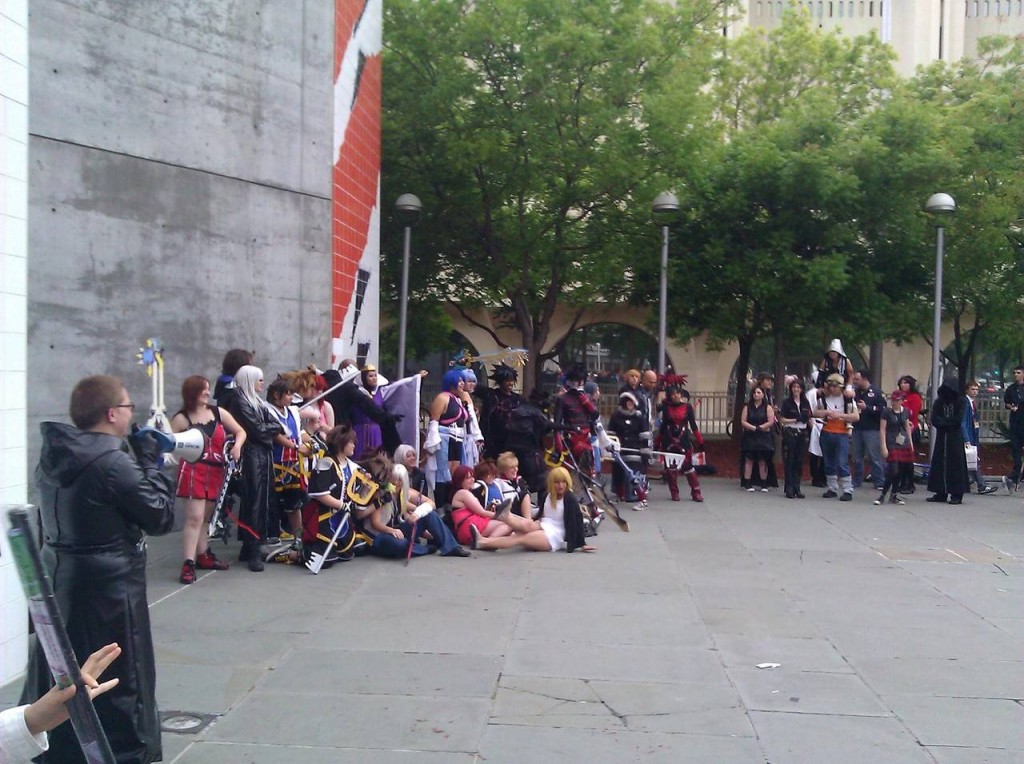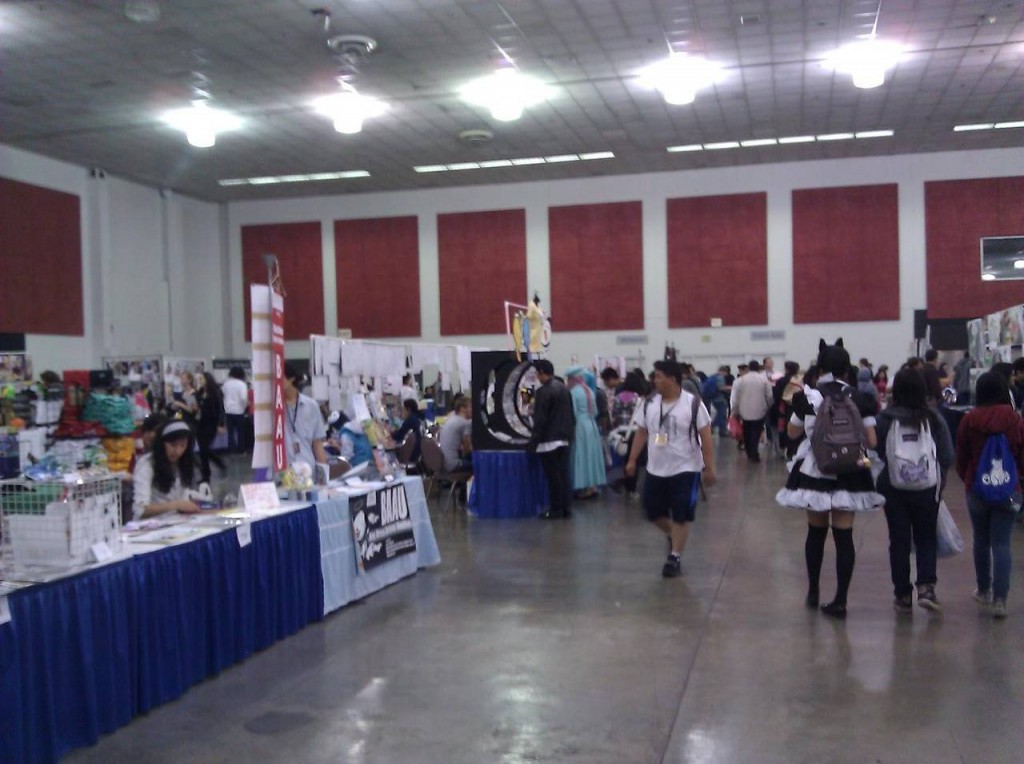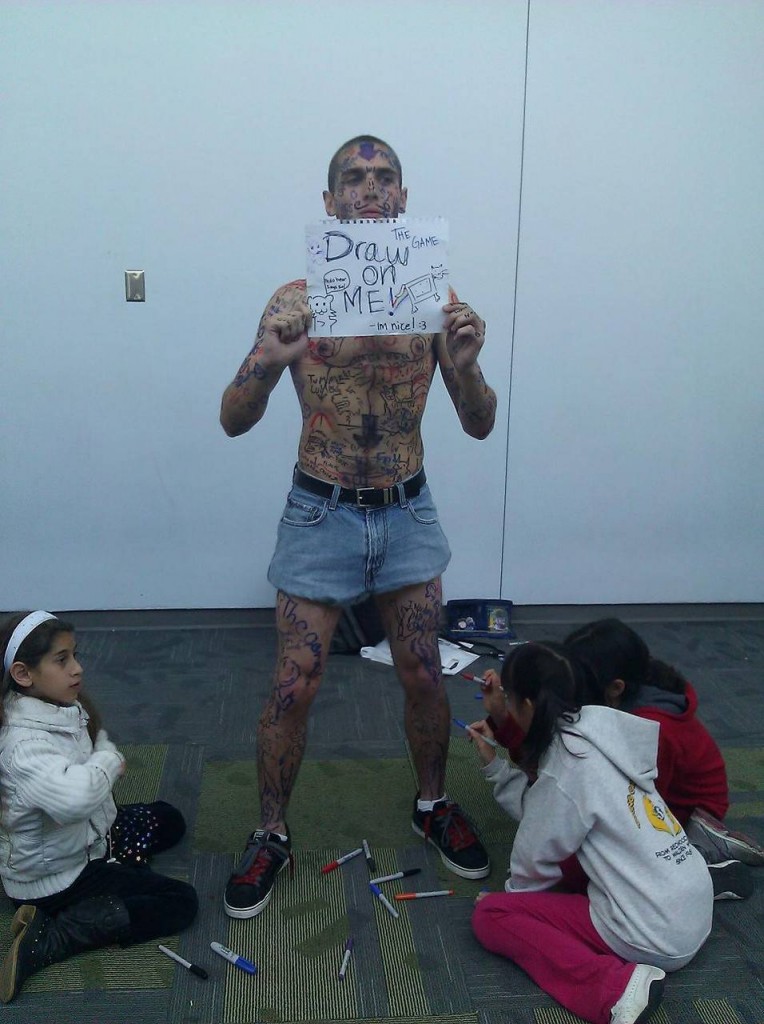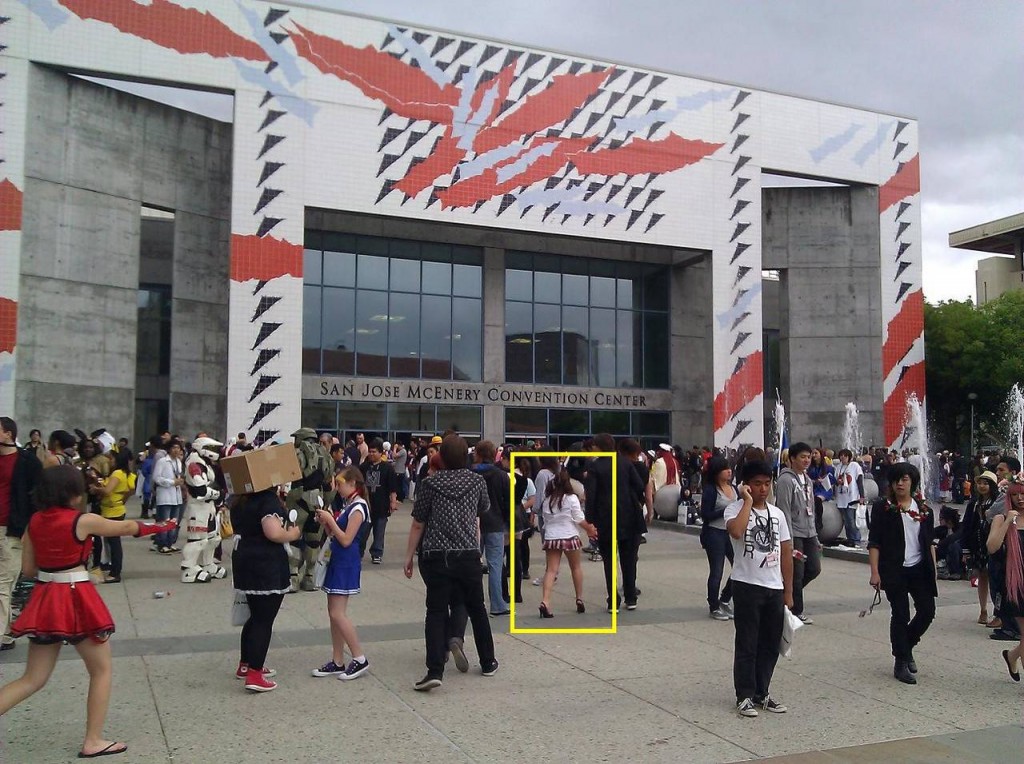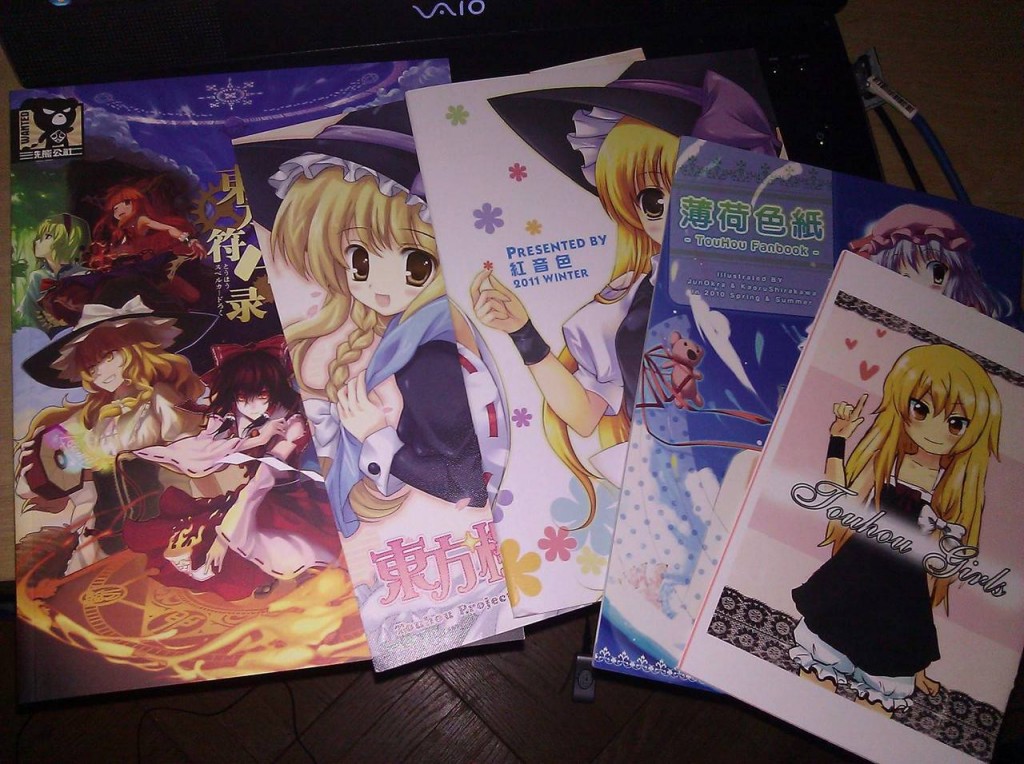Translator’s Introduction: This is part two of the five-part conversation between manga artist and J-Comi founder Ken Akamatsu and manga editor, writer, and professor Takekuma Kentaro. Part one, which also includes a more detailed introduction, can be found on the index below.
Part 1:
“People are Noticing the Possibilities of Viewers Featuring Dynamic Advertisingâ€
“Out of Print Titles Mean a Certain Standard of Quality and an Assurance of Not Being Too Erotic or Violentâ€
“Monkey Manga 2.0 was Planned to be a Media Mixâ€
Part 2:
“The Oil Crisis Led to the Model Where Graphic Novels, Not Magazines, Make the Moneyâ€
“If the Function of Magazines Moves to E-Publishing, New Artists Won’t Sellâ€
“Places for New Artists to Debut and Editors to Practice Will Disappearâ€
Part 3:
“Freelance Editors Will Increase, and Their Success Will Depend on Skillâ€
“When Manga Artists with Producing Skills Fade Away, the Industry Will Snapâ€
“Present-Day Japan Doesn’t Have the Time or Money to Read Manga That Isn’t Guaranteed to be Interestingâ€
Part 4:
“We Might Start Seeing More Manga Artists with Six-to-Eight Million Yen Salaries in the Futureâ€
“As Long as an Artist Pays Their Own ‘Entertainment Fee,’ They Won’t Make Moneyâ€
“Manga Artists Will Independently Hire Editors, as Lawyers or Accountants are Hiredâ€
Part 5:
“I Want to Do Something that Amuses Others, Not Myselfâ€
“Our Job is to Provide a Place to Debut for Those with the Fundamentals Downâ€
“Let’s Meet Again in Five Years. We’ll See Then Who’s Laughing and Who’s Cryingâ€
[Original Article: Masahiro Yamaguchi, ITmedia.
Copyright 2011 ITmedia Inc. All Rights Reserved.]
———————
Part 2:
“The Oil Crisis Led to the Model Where Trade Paperbacks, Not Magazines, Make the Money†(Mr. Takekuma)
Takekuma: Six years ago, I put out a book called “Manga Genkouryou wa Naze Yasui no ka?†(TL: “Why are Manga Page Rates so Low?â€). What first got me to write it was a 2-channel thread where someone had written that Takehiko Inoue, the author of “Vagabond,†was paid 200,000 yen a page as his page rate. I replied anonymously that a rate that high was impossible, but all the replies to me were flames. It turned into quite a battle.
Akamatsu: 200,000 is out of the question.
Takekuma: That was the first and last time I ever got in an argument on 2-channel. Actually, I went through a different route and had asked someone who would know what Mr. Inoue’s page rates were, approximately, at the end of “Slam Dunk.†Even if you extrapolated from there, I was sure that 200,000 was impossible.
Akamatsu: Page rates do go up a bit if your paperbacks begin to sell above a certain level.
Takekuma: That experience got me thinking about looking into the market for page rates in the industry. But it’s tough to ask questions about the subject to manga artists, even if you’re one yourself. That’s why I quietly asked an editor I know at a certain publisher. Of course, he’s a professional, and refused to tell me how much any one sensei made, but he did give me a hint, saying “Mr. Takekuma, disregarding the past, at the moment we don’t have a single artist we pay over 50,000 yen a page to.â€
I also went through one other route, and found out that the editorial costs at a certain weekly shonen manga magazine required to put out one issue was about 20 million yen. A saddle-stitched magazine these days is about 400 pages long, and so if you do some rough math, the most the editorial department would be paying out is 50,000 yen a page. On top of that, some of the titles might have a writer in addition to an artist. In those cases, you need to pay the writer as well, so you’re down to a maximum of 25,000 yen a page. Although, there are gag manga artists who get 30,000 or 40,000 a page.
What I found so strange about this was that young artists today are getting paid the same page rate as I was when I started working in the early 1980s. Publishers were making incredible amounts of money during the Japanese economic bubble, and even as manga sales went up and up, page rates didn’t. On the other hand, editor salaries were going up.
Akamatsu: Yeah, probably.
Takekuma: I wrote this in “Why are Manga Page Rates so Low?â€, but publishers stopped making their profits through magazine sales some time around the early 1970s. When I was a kid, there weren’t new paperbacks available for regular sale like there are now. Until forty years ago, major publishers weren’t using a model where they’d make their money through paperbacks. That’s why manga artists back then could do things like buy houses and cars just with the money they made from their magazine page rates. That’s basically unthinkable these days.
Akamatsu: Definitely.
Takekuma: You see, until the 1960s, the page rates at major manga magazines were high.
—So, high for the price levels at the time?
Takekuma: Right. So, my theory is that the turning point at which magazines were no longer making money and where they started using the model where profits were made through paperbacks was the 1973 oil crisis. There were rumors then that there would be a paper shortage, and supermarkets around the country ran out of toilet paper. This was back when I was in middle school, but I still remember very well that there was a period when issues of “Sunday†and “Magazine†suddenly became half as thick as usual. Though, it was just for a short time.
Akamatsu: Really? I didn’t know about that.
Takekuma: If you ask some of the top, veteran editors at publishers, they’ll remember. Anyway, that among other reasons caused Sunday and Magazine’s circulations to drop suddenly. What suddenly rose up in their place were Champion and Jump. Because Jump especially focused on new authors, they were able to churn out popular newcomers.
For a long time after Jump was started, major artists wouldn’t draw for them. Go Nagai broke out at Jump with “Harenchi Gakuen†(“Shameless Schoolâ€), then immediately went to go work for Shogakukan and Kodansha. I think that’s what caused Jump to begin using their system of exclusive contracts. Since all the veterans and top-selling artists were all working for Sunday and Magazine until the early 1970s, fewer pages in a magazine meant no space for newcomers to debut. But it’s my theory that the oil crisis is what caused those two magazines to go downhill for a period.
Akamatsu: That’s a very likely story. I’ve heard before that because Jump didn’t have fame or money, it had to sell itself through its new authors, but this is the first time I’ve heard about less space in magazines due to less paper. It’s very convincing.
Takekuma: After gathering information from lots of different sources, it’s the only conclusion I can come to. From the summer to the fall of 1973, Sunday and Magazine’s page counts fall, and so do their circulations. Jump rises to prominence after coming in and taking their place. I think it’s a major event in manga history.
Akamatsu: I’ve always just thought of Jump as a magazine that highly valued the Jump pedigree, but hadn’t thought of the space issue on top of that. Sunday and Magazine were fine, since they were full of big-name authors, but Jump was full of unknowns. They kept with that, and grew because of it. And even today, Jump doesn’t take in famous outside authors. Magazine brought in Itagaki (Keisuke) when “Baki†started selling, for example, and brought in CLAMP and whoever else. But Jump definitely doesn’t do that. There’s the rare exception, like Egawa Tatsuya, though.
—You hear people say that even if Jump’s DNA sometimes spreads to other magazines, the reverse never happens.
Akamatsu: That’s what I had thought, but there’s also definitely the problem of page space. So that’s what made publishers move from magazine sales to paperback sales.
Takekuma: Of course, Shogakukan and Kodansha were releasing paperbacks before that. However, it wasn’t the majors who first started printing paperbacks in that format. In May 1966, a small publisher called Kodama Press began a label called “Diamond Comics.†After seeing that, Shogakukan, Kodansha, and Akita Shoten all entered the market within the year, but I don’t believe that any of them expected that it would become the core of their manga business.
Akamatsu: I did own “Doraemon†graphic novels by Tentoumushi Comics when I was in kindergarten, but what about those?
Takekuma: Well, Tentoumushi Comics began in the first half of the 1970s, right? By then, each publisher was already printing their own comics in paperback format. Shogakukan was the quickest of the majors to begin using the format (1966), but their first releases were “Ninja Bugeicho†and “Tetsuwan Atom†(“Astro Boyâ€). Neither of those titles were originally serialized by Shogakukan. Instead, Akita Shoten began selling paperbacks of popular titles serialized in Sunday under an imprint called “Sunday Comicsâ€, which sold like crazy. Akita Shoten proved that paperbacks of manga could make serious money.
Akamatsu: What year was that?
Takekuma: Akita’s Sunday Comics began publishing in 1966. Sunday’s popular serializations being printed by Akita Shoten in paperback format lasted until about 1972.
Akamatsu: That was right around the time that I came into this world. It must have been like printing money at the peak of things.
Takekuma: I think that there were big changes going on right around the time you were born.
“If the Function of Magazines Moves to E-Publishing, New Artists Won’t Sell†(Akamatsu)
—Still, the tankobon ((the Japanese term used for the now-standard independent volumes of a single manga series, similar to the “graphic novel” or trade paperback format in American comics)) business has only been around for about 35 years. You can see traces of that at Shogakukan, where editors aren’t involved in creating trade paperback editions of manga. Editors at Kodansha and Shueisha do get involved with paperbacks, and they do perform manuscript revisions, but Shogakukan has their own separate trade paperback division.
Akamatsu: Well, Magazine has one too.
—Oh, really? Paperbacks these days have designers attached to each specific volume, but in the past, it felt like they’d just use the same format as always, throw some color pages in, and that was it, not even doing revisions. As far as that goes, I always had an image in my mind of your paperbacks having more work put into them than those by other authors, Akamatsu-sensei.
Akamatsu: When they made paperbacks in the past, Magazine would also generally just collect what was serialized in the magazine, get whatever appropriate illustration they could from a magazine cover, then call it a day. Around my time, though, they started to think that just throwing a magazine cover illustration on a paperback didn’t make for much of a collector’s item, and that because the paperback edition is an entirely separate purchase for a reader, that we should do things like original covers, or add bonuses, or have different illustrations under the dust jacket.
—And now you have all sorts of incredible special editions, things like bonus DVDs.
Akamatsu: That’s right. “Negima!†had a limited edition with an OAD (Original Animation DVD). My payment from the 3700 yen OAD package was only my regular trade paperback royalty, so Kodansha must be making a bunch. After all, I’m drawing the opening illustrations and storyboards for the anime for free, and same with my cover illustrations. Not only that, I drew different covers for the regular and limited editions. By making merchandise like that, fans get more excited and buy more books. It’s not even about the book anymore, it’s some sort of media franchise business.
Takekuma: That must be how most business is going to work from now on. That’s why I think everything about the state of publishing has to change, and that in the near future, the role that magazines play will most likely move entirely to e-publishing.
Akamatsu: However, that will cause the industry to shrink. People say this all the time, but magazines are something you buy and then pass around to your friends. You might pick up a magazine in order to read “Hajime no Ippo†(“Fighting Spiritâ€), but because of the magazine format, you might discover that there’s an interesting manga called “Baby Steps†in the magazine, too. Opportunities like this to discover new manga are disappearing.
Takekuma: Yes, but publishers are also now facing the very real problem of not being able to absorb the losses caused by publishing magazines. Really, the only magazine that a publisher can afford to keep around is Jump, which is leading to publishers doing things like putting up an entire magazine for free on the internet, like what’s been done with Morning 2.
Akamatsu: Well, that’s probably losing money too.
Takekuma: So, whether they sell a magazine in stores or post it online, they’re losing money. If you think about which is the better solution, printing physical magazines means that the more they print, the more they lose, so publishers are probably wishing that they could move their magazines online. In any case, I think that they’re going to have to eventually move to a model where they serialize for free electronically, then print a paper book once enough chapters have been published.
Akamatsu: That’s certainly the easiest solution from an infrastructure standpoint.
—Like Akamatsu-sensei mentioned earlier, paper magazines are a single unit, so readers will often read whatever follows their favorite manga, but if you move to an a la carte e-publishing system…
Akamatsu: That’s right, manga by new artists will stop selling. To draw an analogy from the music industry, buying a CD album means you get 12 or so songs at once, but you buy music online one track at a time. 150 yen a track or whatever from iTunes. They don’t want you to do that, they want you to pay 3200 yen for the CD album. If people don’t, then there won’t be anyone to listen to those other tracks. Going back to manga magazines, there’s a growing disparity between titles within the same magazine, where a major magazine will now be split into major and minor titles. Titles that sell do well, but what’s happening now is that titles that don’t sell won’t even sell 50,000 copies. That’s bad for manga. So, it’s fine if things move to e-publishing, but if you can’t account for new artists, then the industry will be crushed five years down the line.
Takekuma: Of course, that’s true. But looking at the situation from an overall perspective, I think that paper magazines are only going to continue to shrink, so we have to start thinking of how to promote new artists. Figuring out how to sell their work is one of the big questions we face.
Akamatsu: I don’t think it’s possible. What do you suggest we do?
Takekuma: Right now, I’m thinking of a lot of different possibilities, but everything is still at the stage of trial and error, so I don’t have any ideas that I think are guaranteed to succeed.
—How was “Mavo†in terms of developing new artists? You published up to volume five in paper format, but publication stopped in 2010.
Takekuma: I created “Mavo†in order to recover my own senses as an editor, and because I wanted to help foster student and amateur artists. Making a paper book really does give a different sense of accomplishment. One problem, though, was that I couldn’t pay manuscript fees (page rates) to the authors, other than the few professionals who worked on it. With me doing what I could on my own, I was able to sell 1000 copies, but I don’t have any sort of sales system, and so the sales numbers would stop right there. At some point, the only thing growing bigger and bigger was my inventory, and I realized that things weren’t looking good, so I stopped. But from an editorial standpoint, it’s a lot of fun to be able to put all sorts of artists in one place using the magazine format.
Akamatsu: That’s true.
Takekuma: As a magazine editor, part of what you do is put works by all sorts of different authors in the same place so that they’ll inspire each other. Mr. Yuri (Koichi), the first editor-in-chief of Afternoon, was a guest lecturer at Kyoto Seika University until last year, and he said the same thing. He said that the true charm of magazines is mixing veteran and new artists together, and having the new artists act as stimuli, inspiring even the veterans though their work. Only, from a reader’s standpoint, people are becoming used to buying individual volumes.
After creating the first volume of “Mavo†at the end of 2008, I went to exhibit at Comiket for the first time in 27 years, and it was a totally different world. I showed “Mavo†to someone who had been involved in doujinshi for a long time, and their first response was, “This is well made, but it’s probably not going to sell.†They said that combination books don’t sell. I didn’t even know what a “combination book” ((「åˆåŒèªŒã€)) was, so I had to ask them what it meant. Apparently, in the world of Comiket, that’s what doujinshi that multiple authors contribute to, like a normal magazine, are called. Then, I asked, “isn’t it a given that doujinshi will be combination books?†That’s right when I realized that all the doujinshi being sold at Comiket were by individual artists.
Akamatsu: It does seem odd to keep calling them doujinshi. After all, the word implies that like-minded (doujin, “åŒäºº”) artists gather to make a magazine (shi, “誌”).
Takekuma: Exhibitors there are called “circles,†but people doing everything by themselves. That’s why people from my generation would normally call what they’re doing kojinshi (“individual magazinesâ€). Apparently, combination magazines have a lot of different authors in them, but buyers just want to read the work by one specific author, and so they don’t want to pay money for comics they don’t want to read. And so, I was told, that’s why combination magazines are at a disadvantage.
Akamatsu: If you compare Jump’s circulation to One Piece’s print run, One Piece is higher. And so, readers of One Piece these days don’t really read other titles. They don’t have time to, either. Once One Piece overtook Jump, I think people began to feel that it’s just faster to buy the paperbacks of One Piece and Naruto and Bleach, then other titles like Bakuman, and that the era of reading magazines is already over.
—Comic Natalie actually did a survey of its users. The results showed that on average, they’re buying 6-8 volumes of manga a month. About 2-3% said they bought over 30 a month, so everyone’s buying a lot of trade paperbacks. People around their 30s buy the most, and that’s also where the highest earners were, so they’re able to buy a lot. One thing they’re not buying, though, is magazines. Looking at those results, I really understood how important it is to listen to the paperback-only readers.
Takekuma: Around the beginning of the 1980s, the current business model of recouping profits through trade paperback sales was created, and publishers became extremely expansionary when the entire industry started to become lively as we entered the bubble era. That’s why they were fine with losing money on magazine sales. They figured that they would sell magazines as an advertising medium in order to sell paperbacks. But now, they’re losing their efficacy as an advertising medium.
Akamatsu: As an artist, I couldn’t continue to work without my trade paperback income.
“Places for New Artists to Debut and Editors to Practice Will Disappear†(Akamatsu)
Takekuma: I think that within three to five years, a considerable number of professional manga editors will be freelancers, though I’m not sure if they’ll become the majority. Right now, Shogakukan is experimenting with heavily using freelancers at the editorial department at “IKKIâ€. Kodansha has been using Ginnansha and other outside editing companies for a while now, too. Of course, Shueisha is still staying pure-blooded.
Akamatsu: I actually applied to work at Ginnansha when I was a senior in college.
Takekuma: I had read that in an interview, and it reminded me of Naoki Urasawa. Mr. Urasawa also applied to work at Shogakukan as an editor. They asked him what his hobbies were in an interview, and when he showed them his manga, they told him to become an artist, not an editor.
Akamatsu: And I had the same experience–I was very close to receiving a job offer, but then won a newcomers award. After that, EIC Igarashi told me that I should go draw manga.
Takekuma: After hearing that story, I began to understand why you approach your work in a very producer-like way. For example, you run your manga studio in a way similar to film or anime studios. After reading in an interview that you wanted to be an editor, it made sense.
Akamatsu: You see, I don’t like drawing pictures. I’ll go out to drink with other manga-ka, and they’ll start drawing girls on the back of order slips. It’s like something inside of them gets excited when they see a white piece of paper. I don’t feel like that one bit. I don’t like doing signatures either. But when I see younger authors who are so passionate about drawing, I start wanting to work and to sell manga.
Takekuma: I think it’s also a good strategy to do something like what Haruki Kadokawa did in the 1970s, where a publisher decides that something is definitely going to sell, and makes a movie of it, along with a huge advertising campaign including TV commercials. It’s hard to do that with a new artist, but for a title by someone like you, Mr. Akamatsu, or some other veteran. Kadokawa did something new when he broke into films in the 1970s, making a widely-discussed movie in order to sell books. His first movie was Seishi Yokomizo’s “Inugamike no Ichizoku†(“The Inugamisâ€). He had Kon Ichikawa (director) shoot it, and probably for the first time ever in Japan, spent something like twice the production budget on flooding the airwaves with television commercials, which made both the movie and the book popular. I think there’s a lot to be learned from that.
Akamatsu: Well, I can understand doing that during that period, but do you think that it’s possible these days? Other than if you did it with something already big, like One Piece.
Takekuma: Hmm. Either way, I do think that the biggest thing lacking in the manga world is advertising. Until now, to publishers, manga was something that sold even if you didn’t advertise. During the middle of the bubble, I asked a Shogakukan employee about how many copies they’d print of a paperback for a new author, on average, and he told me that they don’t go to the presses unless they do a run of at least 20,000 copies. These days, that number is 5,000 copies. Any fewer than that, they don’t get a paperback, even if their serialization ends.
During the bubble, anything that got printed would sell, as long as it was manga, so publishers never gave any serious thought to advertising or promotion. The biggest advertisement a manga would get was its serialization. That’s all breaking down right now. The more copies of a magazine a publisher prints, the more it costs them, and if on top of that it’s like no one is reading them, publishers are losing any reason to keep putting out a magazine. The only reason they keep doing it is because they want to publish paperbacks.
Akamatsu: Do you think that big-time advertising for just plain manga is going to revive manga, though? For example, advertising on television that the new volume of Vagabond has come out. Are you saying that you think that making that fact common knowledge will make more people buy Vagabond?
Takekuma: It might be oversimplified, but fundamentally, yes.
Akamatsu: But you can’t do that for new artists, though. What I’m afraid of is how even Jump can only manage to sell a very limited number of titles, like One Piece and Bleach. This is just a what-if, but will One Piece, Bleach, and Naruto still be around in three years? What do you think?
Takekuma: If it’s just three years, then they should still be around. I’m not sure about ten years from now, though.
Akamatsu: You never know, someone else might even be drawing it. Like Sazaesan.
Takekuma: That’s what makes me think that team-based production of manga titles will become bigger in the future, like how American comics, or Saito Production works.
Akamatsu: So, One Piece, Bleach, and Naruto will still most likely be around in three years. The reason is because Shueisha can’t end their serializations. Similarly, Magazine will still have Hajime no Ippo. But eventually, they’ll have to come to an end. And when they do, the three major magazines might end. They’re not developing new artists, after all.
It’s difficult for an editor to tell a major, established artist with a relatively fixed style, whose manga also sells well, to fix something he sees wrong in a manga, because the editor will be in trouble if the artists makes the fixes, then stops selling as much. It’s the same at both Magazine and Sunday. You draw it, they run it. Editors don’t intervene very much. If three years pass with nothing but artists like this at a magazine, the editors won’t know how to make corrections anymore.
There will be new artists, but no one to fix their work and no place to publish it, and no place for editors to be trained, either. Once that happens, all that will be left are major hit manga that span for ten to twenty years. Those hit titles will be like Lupin III, where the characters can’t be killed off, because there’s a new movie every few years. Once that happens, manga gets stale, and slowly grows weaker and weaker. Once that happens, the industry declines further. What I was worried about on Twitter was that it seemed to me that this chain of events is going to occur.
Takekuma: It’s a very probable situation.
Akamatsu: Right now, my editor at Magazine is younger than me, but it used to be that one artist would have three editors, who would all go wild with corrections. It might be because all the manga artists I associate with are popular ones, but they don’t do many corrections. If an editor was to reject a chapter, it would be so much work to redraw the whole thing that it couldn’t be finished by deadline, so an editor can’t reject a chapter even if they wanted to. I don’t know about Jump, though. It’s clear to me that editors’ correcting skills are declining. It seems like editorial departments feel the same way.
